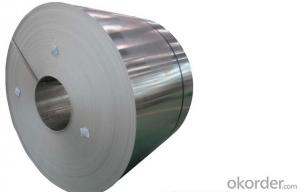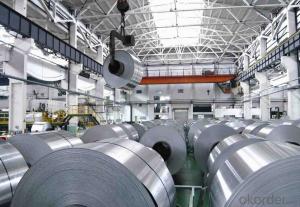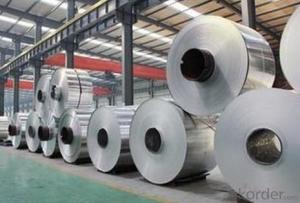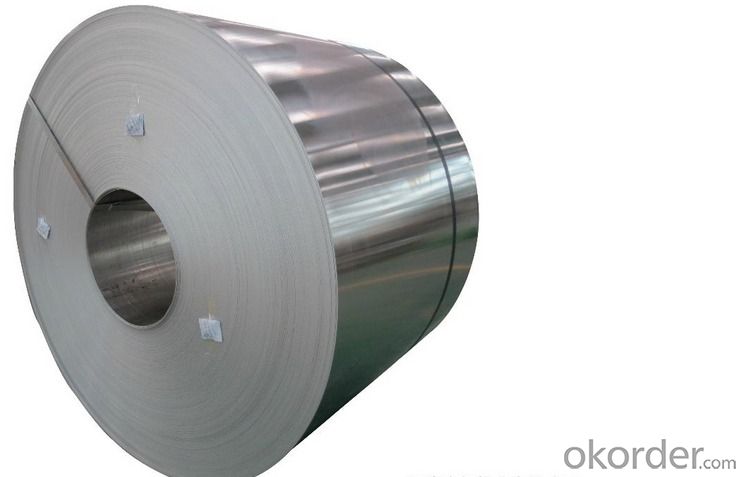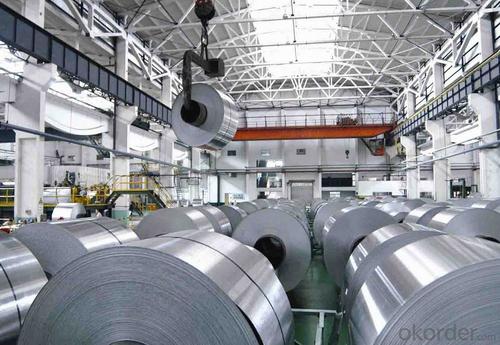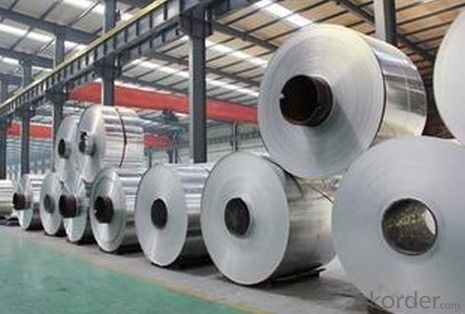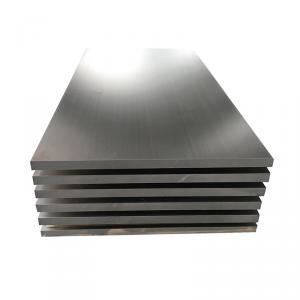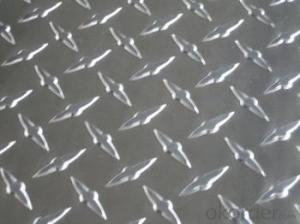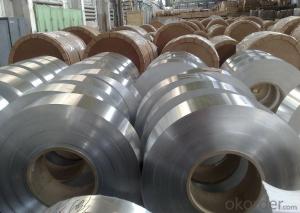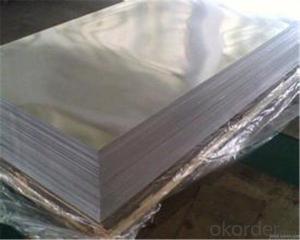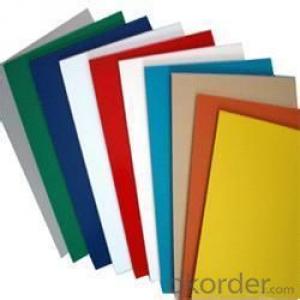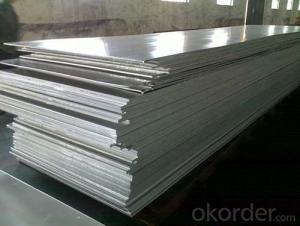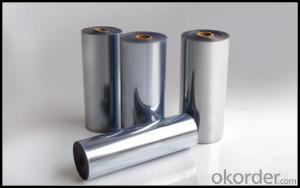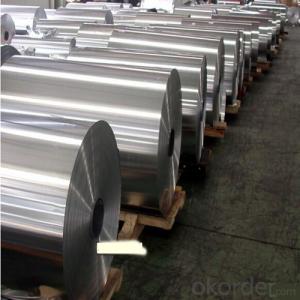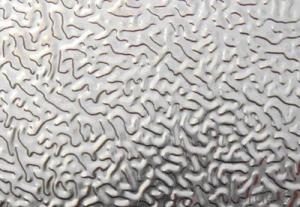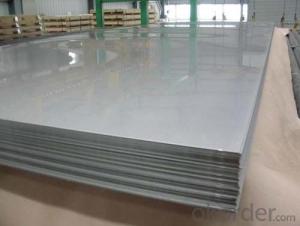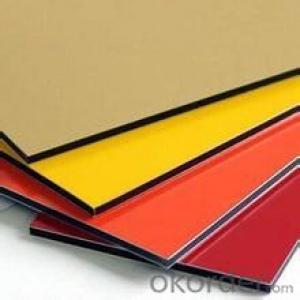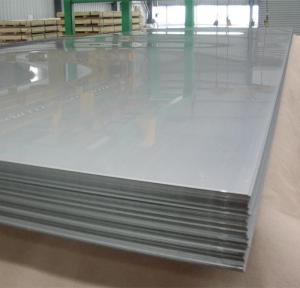Architectural Aluminum Sheets - Anodized Aluminum Sheet for Different Applications
- Loading Port:
- Shanghai
- Payment Terms:
- TT OR LC
- Min Order Qty:
- 1 m.t.
- Supply Capability:
- 2000 m.t./month
OKorder Service Pledge
OKorder Financial Service
You Might Also Like
Specification
Structure of Prepainted Aluminium Coil PPGL Description:
Width and length:to cut as your requirement thickness:0.15-0.3m Tensile Strength:130~150MPa .YieldStrength:130-145.Elongation:≥2%,Earing Rate:≤2%.There are no stop marks or pinch marks on the surface of aluminum sheets.
Main Features of Aluminium Coil PPGL:
SPANISH paper Marca has released a top 10 players of 2015 list on Friday with Leo Messi being placed first and Cristiano Ronaldo 8th. Rather than picking the players themselves, Marca left the ordering up to reader's votes.
Images of Aluminium Coil PPGL:
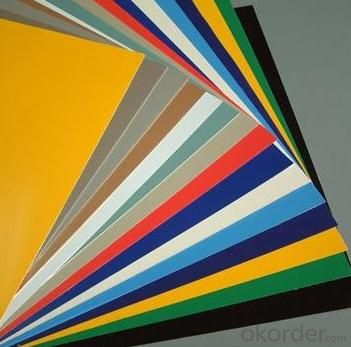
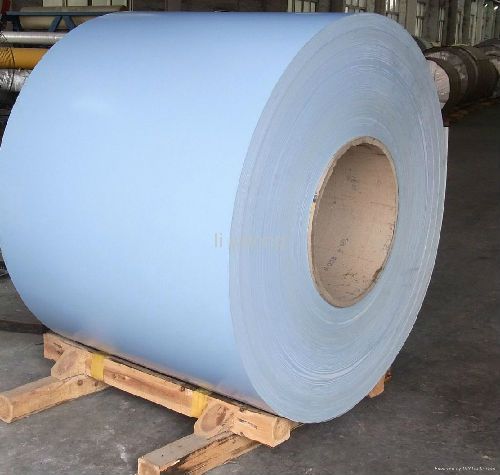
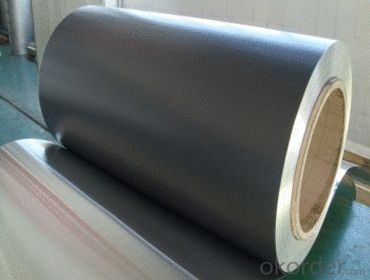
Aluminium Coil PPGL Specification:
Product Name | Aluminum Coil |
Alloy | A1100,A3003,A1050,A8011,A3105,A5005 etc |
Thickness | 0.022mm to 3.0 mm |
Width | Standard width:1240mm; 1200mm |
All width: 30mm - 1600mm | |
Diameter | out dia:1200mm |
Interior dia: 405mm,505mm | |
Weight | 2.5 T/coil,3.0 T/coil |
Coating | PE,PVDF,ACRYLIC |
Surface | Embossed, mill finish, coated; aluminum gutter coil |
Color | AS to all RAL color |
Gloss | 10-90%(EN ISO-2813:1994) |
Coating Thickness | PE: more than 18 micron |
PVDF: more than 25 micron | |
Coating Hardness (pencil resistance) | More than 2h |
Coating adhesion | 5J(EN ISO-2409:1994) |
Impact Resistance | No peeling or cracking(50 kg/cm,ASTMD-2794:1993) |
Flexibility (T-bend) | 2T |
MEK resistance | More than 100 |
FAQ of Aluminium Coil PPGL:
That accolade was locked up by five trophies - the Copa del Rey, European SuperCup, La Liga, the Champions League and the FIFA Club World Cup.
- Q: how to connect copper pipe and aluminum sheet?
- welding!
- Q: Are the aluminum sheets available in different finishes (e.g., brushed, polished)?
- Aluminum sheets can be obtained in various finishes, such as brushed or polished, providing different surface textures and appearances. These finishes are achieved by employing diverse processes that modify the aluminum sheets. Brushed finishes, for instance, create a textured pattern by delicately brushing the surface with fine abrasive materials, resulting in a satin-like look. Conversely, polished finishes involve utilizing abrasive compounds or polishing wheels to buff the surface to a high shine. Consequently, these distinct finishes enable the customization and versatile utilization of aluminum sheets across different industries.
- Q: Aluminum is put into copper chloride and how can you tell what happens to them visually?
- The aluminum metal appears to be turning into copper, but it is actually just removing the metallic copper from its compound state. The Aluminum is oxidized and loses e-, becoming Al 3+ and the copper ions are reduced (they accept those e-) to form solid copper precipitate. The aluminum ions and chloride ions remain in the solution. The reaction will only occur in water and occurs because the transfer of electrons from the aluminum to the copper results in a more stable system.
- Q: Could two pieces of aluminum sheets be welded together?
- sure, it does.
- Q: i know what aluminum is but oxide is not found on the periodic table, and the teacher also gave us a list of common oxidation numbers for polyatomic ions and it is not there also, can anyone help me?
- Aluminum Oxide is just the name of an ionic compound. Kind of like Sodium Chloride. While there is no chloride atom, we know it's just that's the traditional way to name NaCl (table salt.) Aluminum Oxide just means it is aluminum and oxygen combined to form a charge neutral ionic compound. Since we know aluminum has a charge of 3+ (this can be obtained from the periodic table or a chart of cations) and Oxygen has a charge of 2- ( we can obtain this from the periodic table or a chart of anions), all we have to do is make a charge neutral species. In this case Al_2O_3 (those are subscripts) is the correct species because it is neutral. So now we just calculate the weight. Al = 26.98 O= 15.99 so we have 2 Al and 3 O 2 * (26.98) + 3 * (15.99) = 101.9 grams/mol
- Q: What is the most efficient and low cost method for welding 1mm-3mm aluminum sheet?,What's new?
- Welding methods almost all kinds of welding methods can be used for welding aluminum and aluminum alloy, but the adaptability of aluminum and aluminum alloy to various welding methods is different, and various welding methods have their respective application. Gas welding and SMAW method, simple equipment, convenient operation. The gas can be used for welding of aluminum plate and casting of high welding quality requirements. Electrode arc welding can be used for repairing welding of aluminium alloy castings. Inert gas shielded welding (TIG or MIG) is the most widely used method for welding aluminum and aluminum alloys. Tungsten and argon arc welding or tungsten arc argon arc welding can be used for aluminum and its alloy sheets. Aluminum and aluminium alloy heavy plates can be made of tungsten helium arc welding, argon helium tungsten gas welding, MIG welding and pulse MIG welding. MIG welding and pulse MIG welding are more and more widely used (argon or argon / helium)Laser welding machine can also be used
- Q: Can aluminum sheets be anodized without affecting their dimensions?
- Yes, aluminum sheets can be anodized without significantly affecting their dimensions. Anodizing is an electrochemical process that forms a protective oxide layer on the surface of aluminum, which improves its corrosion resistance and durability. The anodizing process involves immersing the aluminum sheet in an acid bath and passing an electric current through it. This causes the aluminum to oxidize, creating a layer of aluminum oxide on the surface. During the anodizing process, the aluminum oxide layer grows inward into the metal, while also building up on the surface. The growth of the oxide layer is controlled by the duration of the anodizing process, and it can be precisely controlled to achieve the desired thickness. Therefore, the dimensional changes caused by anodizing are minimal and can be easily accounted for in the design phase. However, it is important to note that anodizing can cause a slight increase in the thickness of the aluminum sheet. This is due to the growth of the oxide layer on the surface. Typically, the increase in thickness is around 50% of the overall oxide layer thickness. For example, if the desired oxide layer thickness is 10 micrometers, the overall increase in sheet thickness would be approximately 5 micrometers. In summary, while anodizing aluminum sheets can cause a slight increase in thickness, the dimensional changes are minimal and can be accurately predicted and accounted for in the design phase. Anodizing is a popular and effective method for enhancing the properties of aluminum sheets without significantly affecting their dimensions.
- Q: What are the different types of protective films available for aluminum sheets?
- There are several different types of protective films available for aluminum sheets, each offering unique features and benefits. Some common types include: 1. Polyethylene (PE) film: PE film is a popular choice for protecting aluminum sheets due to its versatility and cost-effectiveness. It provides a temporary barrier against scratches, dust, dirt, and moisture during storage, transportation, and fabrication processes. PE film can be easily applied and removed without leaving any residue or damaging the surface of the aluminum sheet. 2. Polyvinyl Chloride (PVC) film: PVC film is another commonly used protective film for aluminum sheets. It offers excellent protection against scratches, abrasions, and UV rays. PVC film is known for its durability, making it suitable for long-term applications. It is available in various thicknesses and can be customized to meet specific requirements. 3. Polyolefin film: Polyolefin film is a type of shrink film that provides all-around protection for aluminum sheets. It is highly resistant to punctures, tears, and moisture. Polyolefin film can be heat-shrunk onto the aluminum surface, creating a tight seal and preventing any damage during handling, storage, or transit. 4. Polyester film: Polyester film is a high-performance protective film that offers superior resistance against chemicals, solvents, and extreme temperatures. It provides an excellent barrier against moisture, preventing corrosion and oxidation of the aluminum sheet. Polyester film is often used in demanding applications where maximum protection is required. 5. Adhesive-backed film: Adhesive-backed films are self-adhesive protective films that can be easily applied and securely bonded to aluminum sheets. They provide a temporary protective layer against scratches, stains, and other surface damages. Adhesive-backed films are available in different adhesive strengths, allowing for easy removal without leaving any residue or damaging the aluminum surface. It is important to select the appropriate type of protective film based on the specific requirements and conditions in which the aluminum sheets will be used.
- Q: This question asks if aluminum sheets are suitable for outdoor use in environments with high temperatures.
- <p>Yes, aluminum sheets can be used for outdoor applications even in high temperatures. Aluminum has a high melting point of around 660掳C (1220掳F), making it resistant to heat. It also has good thermal conductivity, which allows it to dissipate heat quickly. However, it's important to note that prolonged exposure to high temperatures can cause aluminum to expand and potentially warp. For outdoor applications, especially in high-temperature environments, it's recommended to use aluminum alloys designed for such conditions to ensure durability and performance.</p>
- Q: Can aluminum sheets be painted or coated?
- Yes, aluminum sheets can be painted or coated. Aluminum is a versatile material that can be easily painted or coated to enhance its appearance or improve its performance. The key to achieving a successful paint or coating on aluminum is proper surface preparation and the use of suitable primers or coatings designed specifically for use on aluminum. The surface of the aluminum sheet needs to be clean, free from any oils, dirt, or oxidation, and may require sanding or etching to promote adhesion. Once the surface is prepared, a wide range of paints or coatings can be applied, including liquid paints, powder coatings, and anodizing. These finishes can provide various benefits such as increased corrosion resistance, improved durability, enhanced aesthetics, and even specialized properties like heat resistance or anti-microbial properties. It is important to consult with a professional or follow the manufacturer's guidelines to ensure the proper application and longevity of the paint or coating on aluminum sheets.
Send your message to us
Architectural Aluminum Sheets - Anodized Aluminum Sheet for Different Applications
- Loading Port:
- Shanghai
- Payment Terms:
- TT OR LC
- Min Order Qty:
- 1 m.t.
- Supply Capability:
- 2000 m.t./month
OKorder Service Pledge
OKorder Financial Service
Similar products
Hot products
Hot Searches
Related keywords
